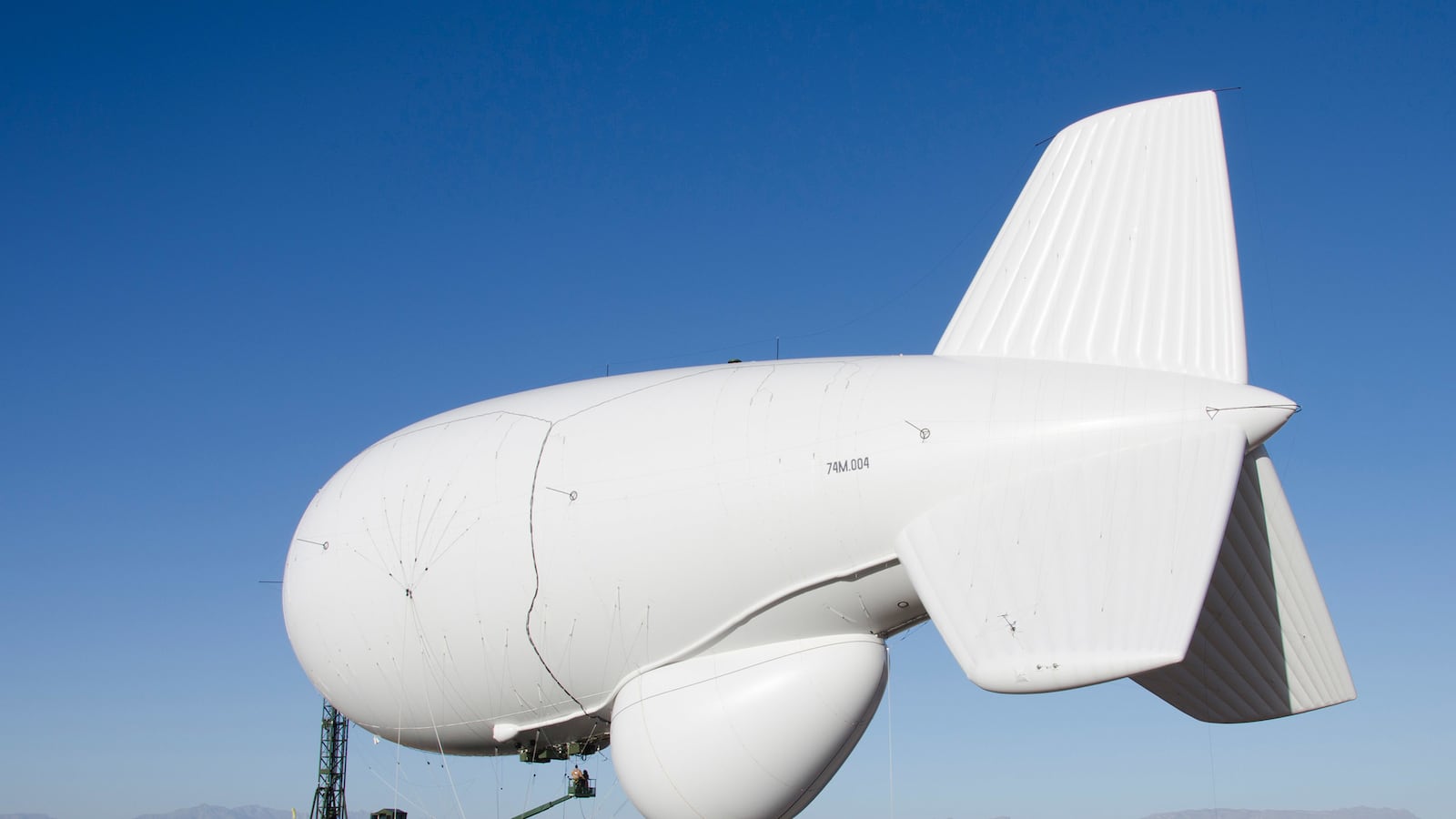Two armed F-16 fighter jets pursued a massive, out-of-control U.S. Army blimp across Maryland and Pennsylvania on Wednesday, the North American Aerospace Defense Command said Wednesday.
NORAD spokesman Capt. Scott Miller says the blimp was “grounded” in Montour County, Pennsylvania, at 3:40 p.m. after it came untethered around 12:20 p.m. at Aberdeen Proving Ground, Maryland. The blimp, a Joint Land Attack Cruise Missile Defense Elevated Netted Sensor System (JLENS), flew more than 160 miles, reaching heights of 16,000 feet.
A portion of the blimp’s tail fell off and it had deflated by the time it reached the ground, Miller said. NORAD will launch an investigation into the cause of the incident; Miller said the military does not know what caused the blimp to deflate but that it was not “intentionally” deflated. Miller added that there was no consideration of shooting it down.
The blimp’s 6,700-foot-long tether snagged power lines, taking out electricity for some 30,000 people.
As it drifted across Maryland and Pennsylvania, the JLENS became fodder for memes and even a parody Twitter account, @AberdeenBlimp.
Secretary of Defense Ash Carter, in brief remarks to reporters Wednesday, suggested “bad weather” was a factor in the loss of the JLENS but would not say how it could be retrieved. Rather he said, the department’s focus was “getting it to descend” but stopped short of specifying how.
First proposed in 1998, the Raytheon-designed blimp far exceeded costs. By 2012, the U.S. had spent nearly $2 billion but didn’t have a product in the sky to show for it. Rather, the money went to working out a series of development problems. At one point, the Pentagon considered killing the program but instead spent another $6 billion to get 14 pairs of them in the sky.
Similar blimps were frequently used during the wars in Iraq and Afghanistan. They were intended to offer an alternative to drones, which use more fuel and manpower to operate. In the wars, the blimps came loose, especially during bad weather, and at times, U.S. troops had to shoot them down.
Filled with 590,000 cubic feet of non-flammable helium, JLENS uses two tethered aerostats, each 240 feet long. Originally crafted in 2013 to detect cruise missiles, its radar’s reach expanded to drones, tanks, and small planes.
It is an Army development, which, according to a March 2014 Government Accountability Office report (PDF), cost an estimated $2.78 billion to create. Each unit costs roughly $175 million. Construction on JLENS began in February 2014 at Aberdeen, according to the GAO report.
The blimp has flown over Aberdeen Proving Ground, roughly 45 miles north of Washington, since late 2014 for a three-year test. The goal was to use the blimp to spot threats before they reach the capital and it could see for hundreds of miles around. The blimp is designed to stay afloat for roughly 30 days at a time.






